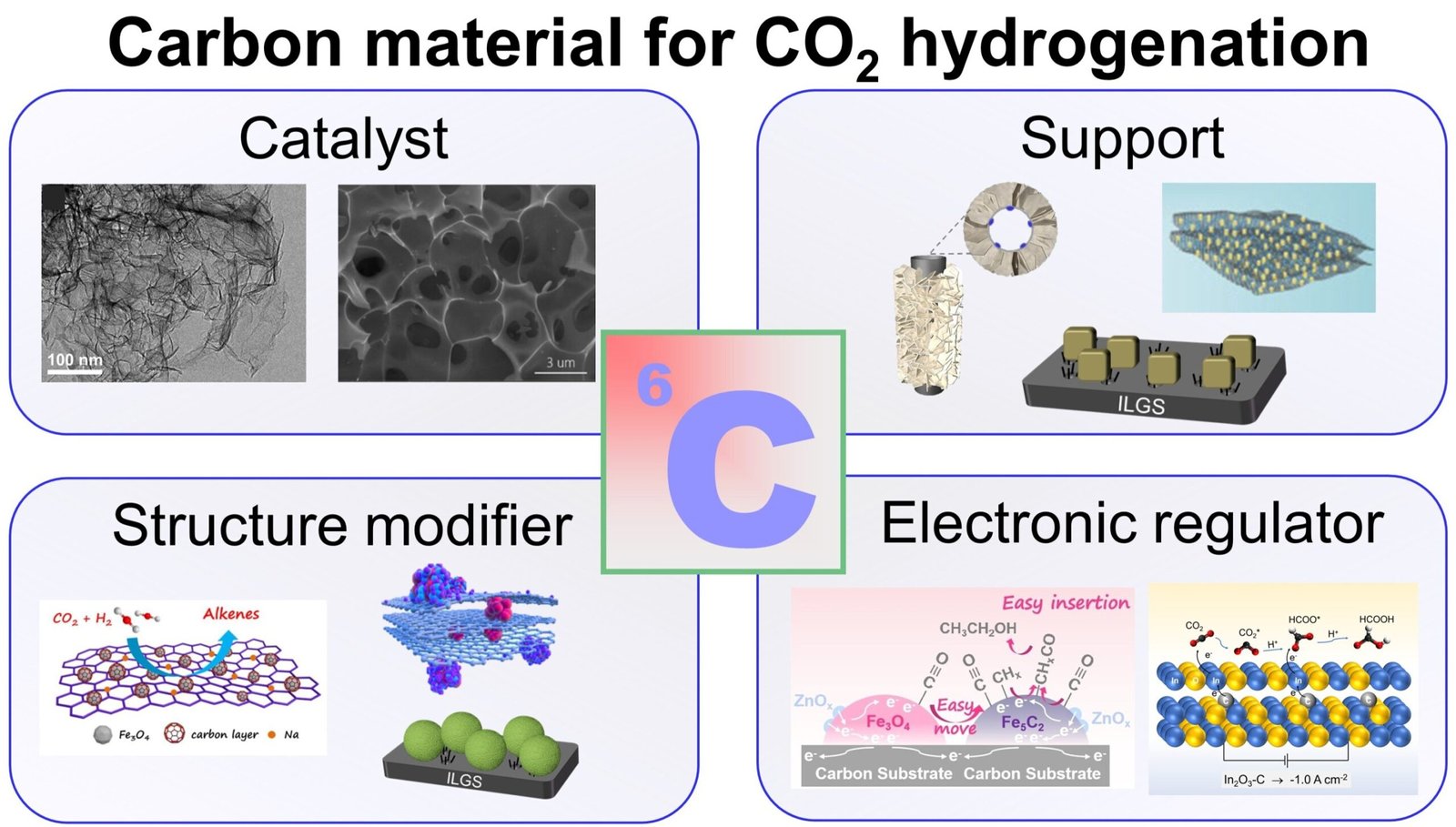
One of the primary drivers of climate change, CO2 emissions, has reached over 35 million tons worldwide. With global annual temperatures still rising, reducing CO2 emissions has become a necessity. To turn this necessity into an opportunity, researchers have been working to find ways to capture the CO2, thereby reducing emissions and then converting that CO2 into valuable chemicals and fuels.
One of the difficulties of working with CO2 is that it is very thermodynamically stable. To overcome this, additional energy and a strong catalyst are needed to drive the reaction. A research group at China University of Petroleum (East China) has been investigating the use of carbon-based catalysts in the conversion process. They have designed several different very effective synthesis strategies using these catalysts in the catalytic conversion of CO2.
Their review is published in Carbon Future.
“In this review, we summarized the development strategy of catalysts by carbon species assisting method in our research group, which can be applied to CO2 thermochemical and electrochemical hydrogenation. This review aims to inspire new ideas for CO2 hydrogenation through the design of carbon-based catalysts,” said Mingbo Wu, a professor at the College of New Energy, State Key Laboratory of Heavy Oil Processing at the China University of Petroleum (East China) and lead author of the paper.
The researchers chose to focus on carbon species because their physical and chemical properties make them good candidates as catalysts, they can be relatively inexpensive and are very stable. Carbon-based catalysts can also play various roles in the preparation and process of CO2 catalytic conversion. They can be used to modify the structure of catalysts, as supports of catalysts, as electronic regulators of catalysts and as the bulk catalysts.
CO2 conversion occurs via CO2 hydrogenation, the addition of hydrogen atoms to the CO2 and removing its oxygen atoms. This is accomplished using either the energy from electrocatalysis, which uses electricity to drive the process, or thermocatalysis, which uses heat to drive the process. In order to avoid increasing the amount of pollutants and green-house gases, Wu’s team recommends using green renewable energy as the energy source wherever possible.
Wu’s team has designed and researched several different catalyst strategies. An example of one of these strategies is the electrocatalysis reduction of CO2 via a carbon-based catalytic material.
In essence, CO2 is converted to HCOO, formate, which is a nontoxic, easy to transport and very promising green fuel. The difficulty in designing these strategies lies in building a process that is both efficient and stable, hence the importance of the design of the process and the type of catalyst used.
The researchers carried out the conversion using carburized iridium oxide nanorods, a metallic oxide. The process they designed uses the carbon species’ ability to modulate the electronic structure of metals, thus enhancing the activity of catalysts and selectivity of formate, said Wenhang Wang, a researcher from the School of Chemistry and Chemical Engineering at Liaocheng University and first author of the paper.
“We will always be committed to the development and application of carbon-based catalysts. With the development on the design concept of the catalyst and characterization technology, we strongly believe that a clear roadmap of the utilization of carbon materials for catalysts is drawn and the breakthrough in this field will be witnessed in the near future,” Wu said.
More information:
Wenhang Wang et al, Carbon-based material for CO2 catalytic conversion applications, Carbon Future (2024). DOI: 10.26599/CF.2024.9200016
Provided by
Tsinghua University Press
Citation:
Development strategies for using carbon-based catalysts in CO₂ conversion (2024, September 12)
retrieved 12 September 2024
from https://phys.org/news/2024-09-strategies-carbon-based-catalysts-co8322.html
This document is subject to copyright. Apart from any fair dealing for the purpose of private study or research, no
part may be reproduced without the written permission. The content is provided for information purposes only.
